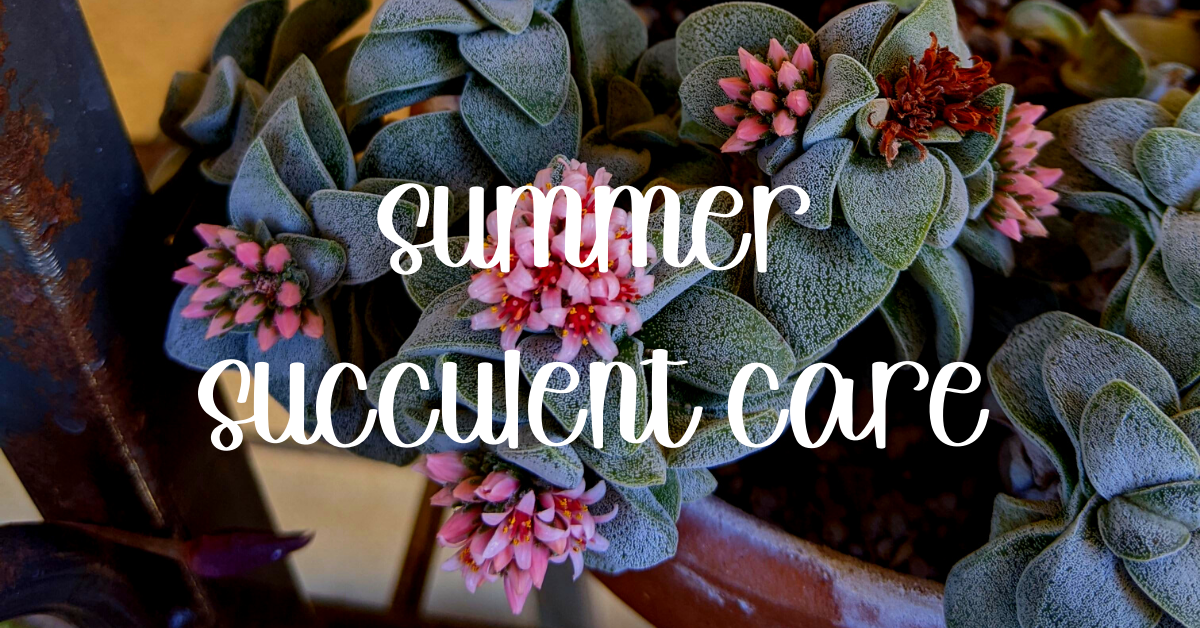Succulents are adapted to survive in hot, dry conditions, but they still need special care during the summer months to thrive. If you’re a succulent enthusiast, it’s important to take steps to protect your plants from the heat and keep them healthy. In this post, we’ll go over the basics of summer succulent care and provide some tips for keeping your plants happy during the warmer months.
Dig in!
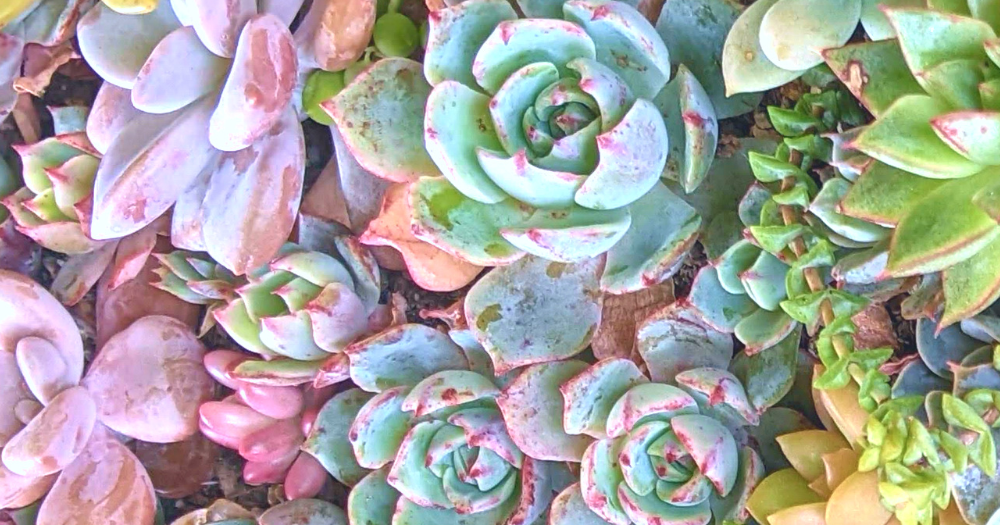
How Succulents Adapt to Hot Weather
Succulents are native to arid regions, so they are adapted to survive in hot, dry conditions. In fact, they thrive in hot weather, as long as they are provided with enough water and sunlight.
Succulents are well adapted to hot temperatures in several ways:
• Thick, waxy leaves. The leaves of most succulents are thick and covered in a waxy cuticle. This waxy coating helps retain moisture and protects the leaves from excessive evaporation in hot, dry air. The thick leaves also store water, which succulents can draw upon if water is scarce.
You might also like: The Fascinating World of Powdery Farina: Understanding 3 Ways the White Powder on Succulent Leaves Protects Them
• Crassulacean acid metabolism (CAM). Many succulents use a photosynthetic pathway called CAM that is more efficient in hot, dry conditions. CAM opens stomata at night to take in CO2, then closes stomata during the day to reduce water loss. This allows succulents to photosynthesize while minimizing water loss due to evaporation.
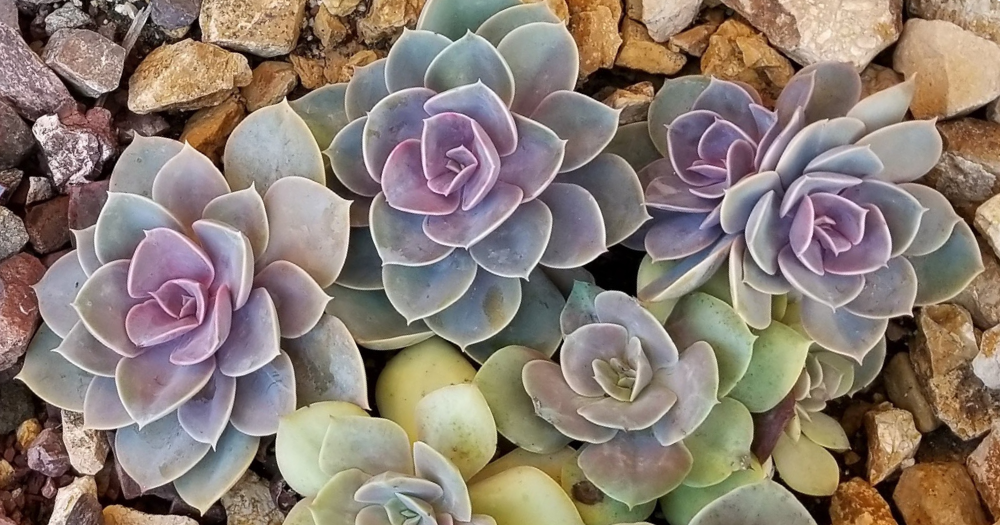
• Dormancy in extreme heat. Some succulents enter a state of dormancy in very hot, dry summer conditions. During dormancy, their growth slows or stops, and they survive on the stored water and nutrients in their leaves and stems. Once temperatures cool in fall, they resume normal growth. Dormancy is a survival mechanism to cope with harsh, drought-like summer conditions.
You might also like: Succulent Dormancy: 5 Easy Ways to Tell if Your Succulent is Going Dormant
• Shading and reflection. Some succulents have adaptations like farina that help reflect sunlight and keep the inner tissues cooler. Hairy or shaded areas on leaves also provide some protection from intense sun. You may even notice that some of your rosette shaped succulents like Echeveria and Aeonium close up a bit. This is another protective adaptation which reduces the surface are exposed to the sun. These adaptations prevent overheating and keep the succulent from becoming stressed in very hot temperatures and bright light conditions.
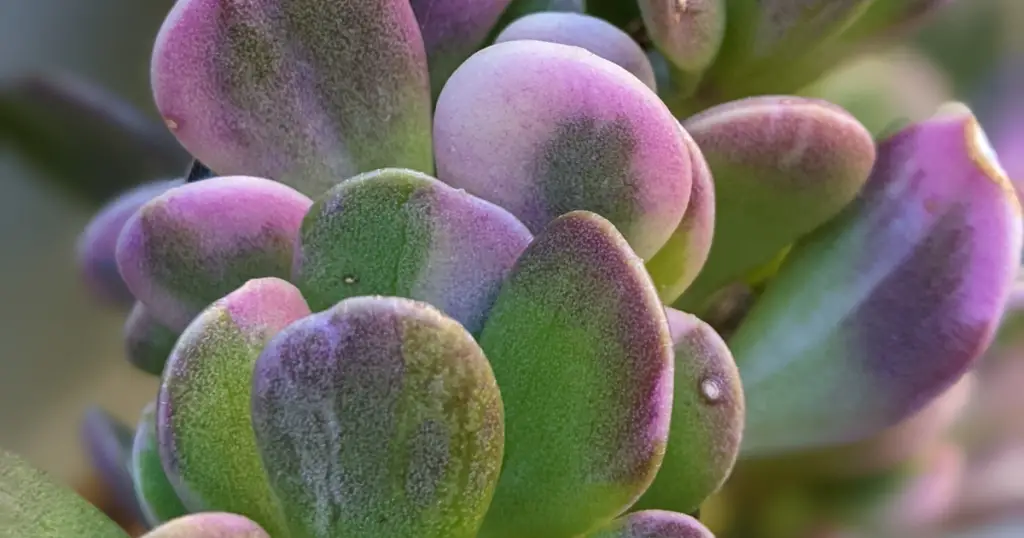
Succulents are well suited to hot temperatures through their ability to store water, use efficient photosynthetic pathways, enter dormancy during extreme heat, and reflect or shade light to prevent overheating. Thanks to these special adaptations, succulents are able to thrive in hot, arid climates.
You might also like: Echeveria ‘Encantada’: 3 Secrets to Growing
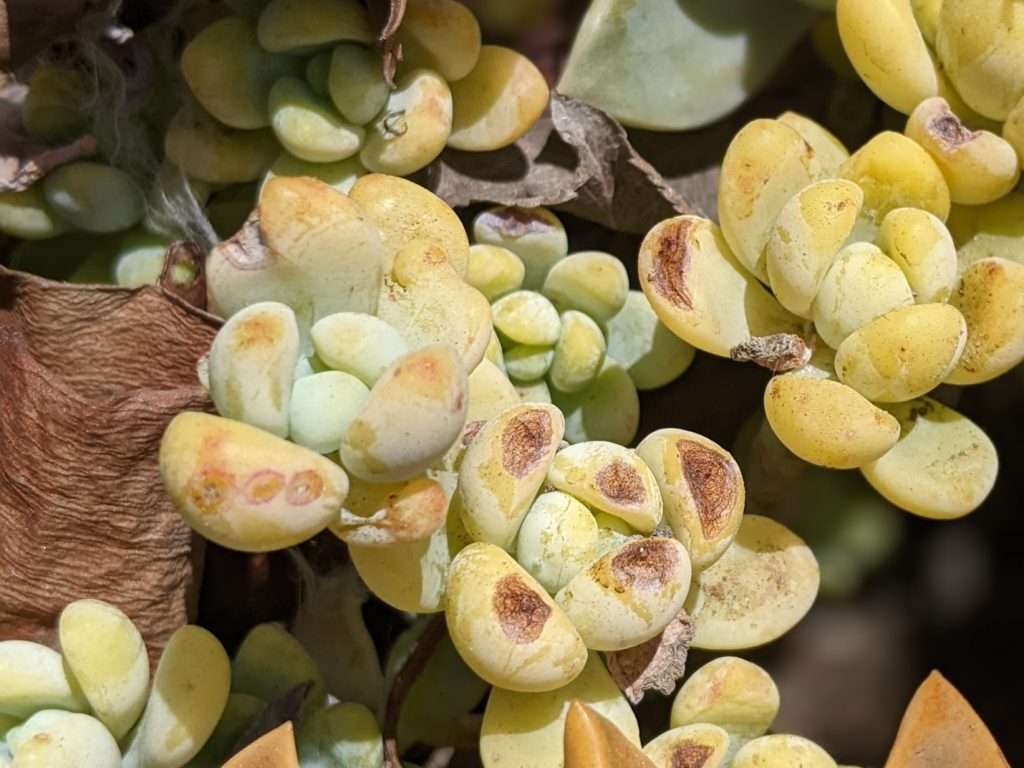
Tips for Summer Succulent Care
As warmer summer weather arrives, it’s important to adjust your succulent care routine to keep your plants healthy and thriving. Here are some tips for succulent care in summer:
Provide adequate light. Succulents need lots of light to grow in summer, but intense direct sun can stress them. Place succulents in a sunny spot outdoors or by a sunny window indoors, but avoid direct sun during the hottest parts of the day. If needed, use a sheer curtain or shade cloth to filter sunlight. South- and west-facing windows tend to provide the most light for succulents indoors. If adequate natural light is unavailable, use a grow light.
You might also like: How to Grow Succulents Indoors Without Killing Them (2023)
Regulate watering. Less frequent but deeper watering is key for succulent care in summer. Allow the soil to dry out between waterings, then water thoroughly until water flows out the drainage hole. Check the soil before watering to avoid overwatering. In very hot weather, check the soil more often and water as needed to keep it from drying out completely. Succulents grown indoors may need less water in summer since they receive less light. Always use well-draining cactus potting mix and pots with drainage holes.
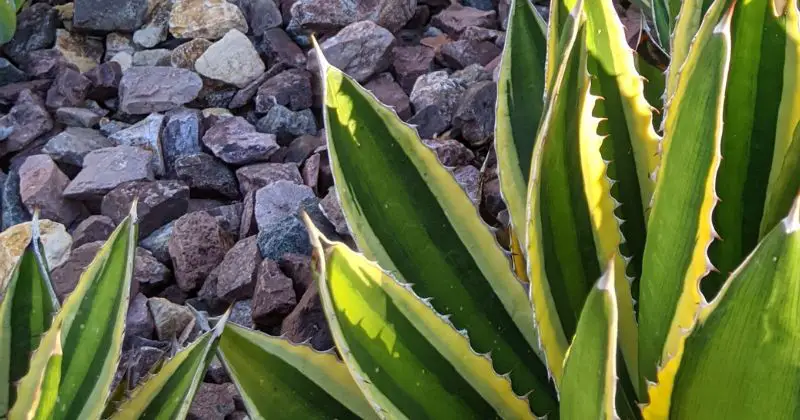
Personally, I keep an eye on the temperatures 10 days out for convenience and water my landscape succulents deeeeeeeeeply so that the water has time to work itself way down into the cooler ground. It gives the succulents time to take in the water they need to survive the hottest parts of the summer. I quite literally turn on the hose and let it run from the highest parts of my yard until I start seeing runoff.
You might also like: What is Growing Out of My Succulent? A Simple Guide With Tons of Pictures
Monitor for and control pests and diseases. Mealybugs, scale, thrips, and other common succulent pests thrive in the warm summer weather. Check your succulents at least once a week for any pests or disease spots and treat them promptly. Providing the right light, water, and soil conditions will help keep your succulents healthy and less susceptible to problems. Moving succulents indoors during summer can also help avoid pests.
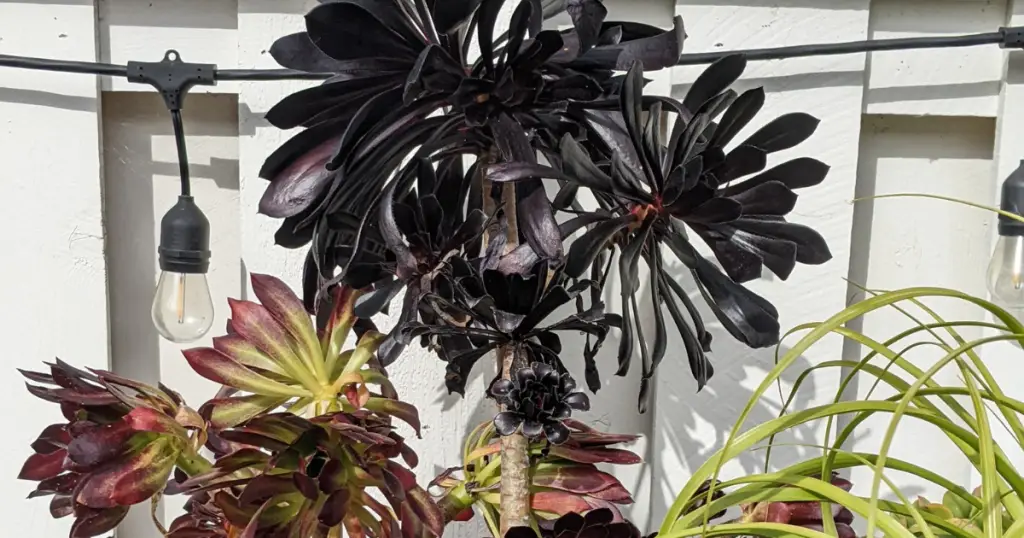
Fertilize lightly. If desired, you can fertilize your succulents every 2-4 weeks during summer with a balanced, diluted fertilizer. However, succulents do not rely heavily on fertilizer if they are receiving adequate light and water. Stop fertilizing in fall when growth slows down.
You might also like: Graptopetalum amethystinum ‘Lavender Pebbles’ and Pachyphytum oviferum ‘Moonstones’: A Guide to Instantly Identify These 2 Unique Succulent Species
Prune as needed. Summer is an ideal time to prune succulents when growth is active. Pruning will shape the plant and remove any dead or damaged leaves or stems. It also encourages new, compact growth. Use sharp, clean pruning shears or scissors and cut off stems at their base. You can propagate any cuttings you remove.
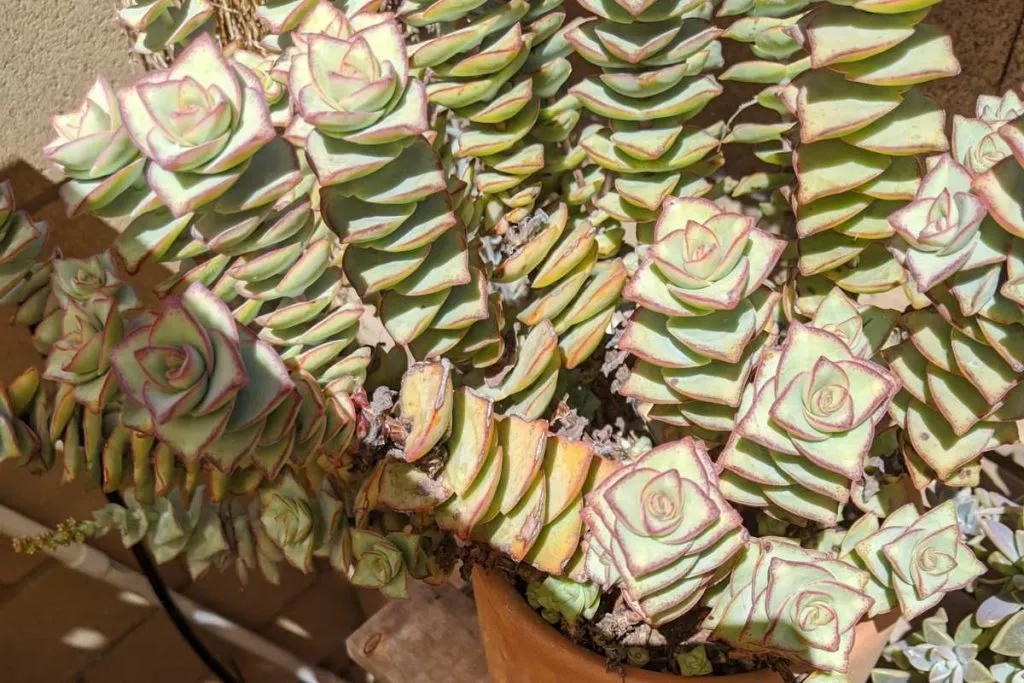
Depending on the forecast, I’ll let some succulents grow instead of pruning them so that they may provide shade for the smaller, more tender succulents below.
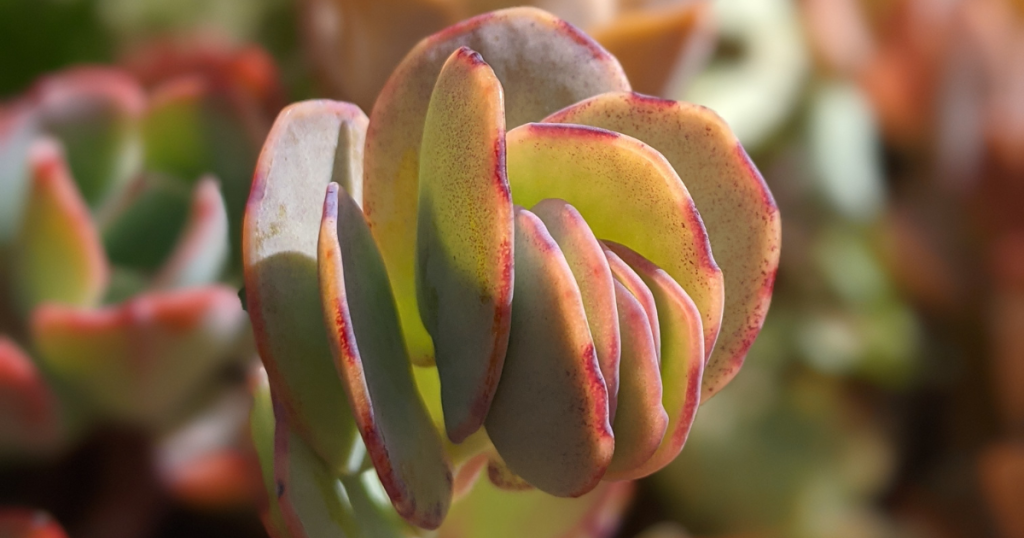
With proper care, succulents can thrive during the summer. Provide enough water and sunlight, maintain good airflow, watch for stress, increase humidity for indoor succulents, fertilize lightly, and check for pests. If you follow these tips, your succulents should stay healthy despite the challenges of hot summer weather.
You might also like: Pumice and Perlite: What are the key differences and benefits? A not so definitive guide.
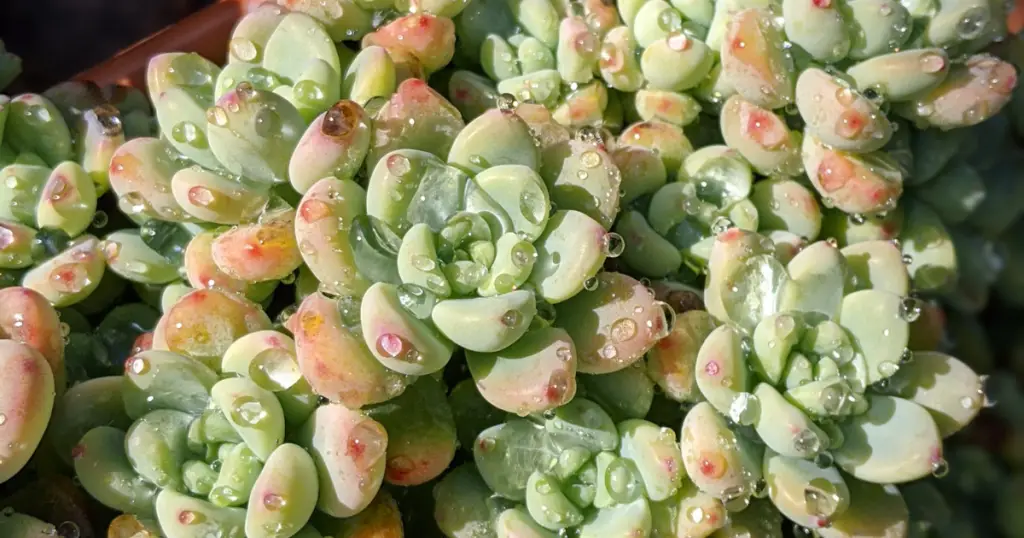
To water your succulents in the summer, follow these steps:
- Check the soil moisture: Before watering your succulents, check the moisture level of the soil. Stick your finger about an inch into the soil. If the soil feels dry, it is time to water your plants. If the soil feels moist, wait a few more days before watering.
- Water the soil, not the plants: When watering your succulents, aim the water at the soil, not the plants. Succulents are prone to rot if their leaves and stems remain wet for extended periods of time.
- Use room temperature water: Use room temperature water to water your succulents. Cold water can shock the plants and cause them to wilt.
- Water thoroughly: When watering your succulents, be sure to water the soil thoroughly. The water should reach the roots of the plants. This helps to prevent the plants from becoming stressed due to a lack of moisture.
- Allow the soil to dry out: After watering your succulents, allow the soil to dry out slightly before watering again. This helps to prevent the plants from becoming waterlogged and helps to encourage strong root growth.
In general, succulents do not need a lot of water and should be watered sparingly in the summer. It is important to allow the soil to dry out slightly between waterings to ensure that the plants receive the moisture they need without becoming waterlogged.
You might also like: Efflorescence on Terracotta Pots: What It Is and 5 Simple Ways to Prevent It

When you water a succulent when the weather is really hot, there are a few things to watch for:
- The water may evaporate quickly: If the weather is very hot, the water you use to water your succulents may evaporate quickly before it has a chance to reach the roots of the plants. This can lead to soil that is too dry, which can stress the plants and make them more susceptible to pests and disease.
- The soil may dry out too quickly: If the weather is very hot, the soil in your succulent pots may dry out quickly, even if you water the plants regularly. This can lead to soil that is too dry, which can stress the plants and make them more susceptible to pests and disease.
- The plants may wilt: If the weather is very hot and the soil is too dry, your succulents may wilt. This is a sign that the plants are stressed and are not receiving enough moisture.
You might also like: ‘String of Blimps’ Senecio radicans: 7 Tips for Growing and Caring for This Interesting Succulent

Common Problems with Summer Succulent Care
There are a few common problems that can arise during the summer months, including:
- Overwatering: It’s easy to overwater your succulents during the summer, as they are actively growing and need more hydration. Be sure to water your plants only when the soil is dry, and avoid getting the leaves wet.
- Sunburn: Succulents are adapted to survive in hot, sunny conditions, but they can still get sunburned if they are exposed to too much intense sun. To prevent sunburn, be sure to provide your plants with plenty of shade during the hottest part of the day.
- Pests: Succulents can be vulnerable to pests, especially during the summer when they are actively growing. Keep an eye out for signs of infestation and take steps to control pests as needed.
You might also like: 12 Succulent Pests and Diseases: Identification, Treatment, and Easy Prevention of Mealybugs, Thrips and More

How to Protect Succulents in the Summer
Use a shade cloth or screen. If you can’t move your succulents indoors or to a shaded area, you can still provide them with some protection from the heat by using a shade cloth or screen. These structures can help to block some of the intense sun and keep your plants cooler.
Use a protective cover. If you can’t move your succulents indoors or use a shade cloth or screen, you can still provide them with some protection from the heat by using a protective cover. You can make your own cover using a piece of fabric or a tarp, or you can purchase a specifically designed plant cover.
Mulch outdoor succulents. A layer of gravel mulch helps reflect sunlight and insulate the soil. The mulch keeps the soil cooler and slows moisture loss. Be sure not to pile the mulch up onto the succulent leaves or stems.
You might also like: Propagating Cacti: 4 Techniques, Tips, and Mistakes to Avoid
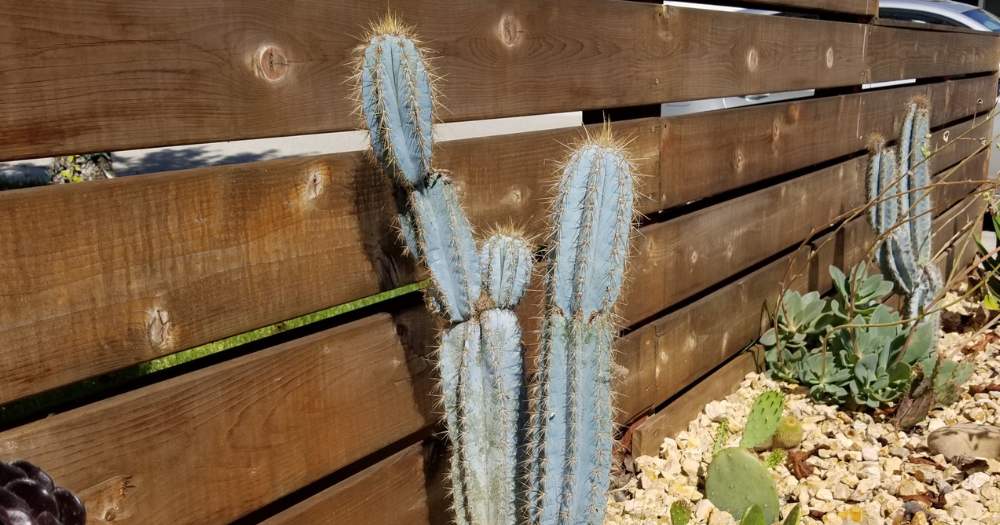
How can I tell if my succulent is getting too much sun?
Some signs that a succulent is getting too much sunlight include:
- Leaves turning brown or yellow, especially on the tips or margins
- Leaves becoming bleached or pale in color
- Stems becoming purple or red, especially near the base
- New growth becoming sparse or stunted
- Blistering or sunburn marks on the leaves
If you notice any of these issues on your succulent, it’s likely getting sunburned from intense direct sunlight. The solution is to move the succulent to a spot with bright indirect light or provide some protection from the intense midday sun. Sheer curtains, shade cloths, or a covering of translucent plastic are options for filtering the light. With less intense light exposure, your succulent should recover and show new healthy growth.
You might also like: 10 Interesting Facts About Echeveria derenbergii ‘Painted Lady’ You Need to Know
Other items for summer succulent care include umbrellas, pebble trays and a cool mist humidifier. Find everything you need here, in my Amazon List!
You might also like: Improve Air Quality With These 5 Succulents
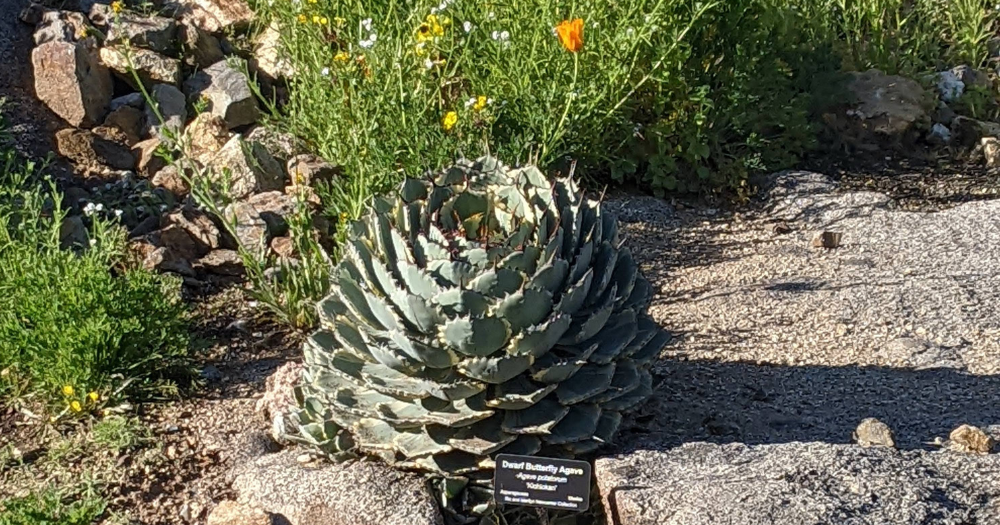
Additional tips for dealing with too much sun exposure for succulents:
- Gradually acclimate succulents to more sunlight to avoid shock. Move them to brighter light in increments, especially for succulents that were grown in shade. This allows them to adjust to the increased light intensity slowly.
- Choose succulents that are suited to your local climate and amount of sunlight. Some succulents are more tolerant of intense sun than others. If you have a lot of direct sunlight, choose sun-tolerant species. If you have mostly shade, choose succulents that thrive in low light.
- Watch newly purchased succulents closely for several weeks. Succulents grown in a nursery or greenhouse are accustomed to filtered light and may suffer upon moving to a home with strong direct sun exposure. Ease them into more sunlight slowly to avoid sun damage or stress.
- Sun exposure needs can change based on the seasons. Most succulents do best with strong light year-round, but the intensity of the sun is weaker in fall and winter. You may need to move succulents to brighter spots or use a grow light to provide enough light during these seasons. In summer, protection from intense midday sun may be needed, especially for succulents not accustomed to it.
- Learn the individual light needs of your succulent collection. Different succulent species and varieties have varying light requirements. By understanding the needs of each succulent you have, you can better meet those needs through placement and Shade protection or filtering. With experience, it will become easier to tell how much light is right for your succulents. My trick for where to start learning the light needs is by understanding where they were displayed at the nursery to have a better idea of where to place them in my yard.
Succulents are tough plants that thrive in hot, dry conditions, but they still need special care during the summer months. By following the tips in this post, you can keep your succulents healthy and happy during the warm season. Happy planting!
Once you’ve gotten through summer, it’s time to think about winter preparations for your succulents here Winter Succulent Care: Keep Your Plants Happy During the Cold Months With These 3 Tips
You might also like: Epiphytic Cacti: The Fascinating Air Plants of the Cactus Family

